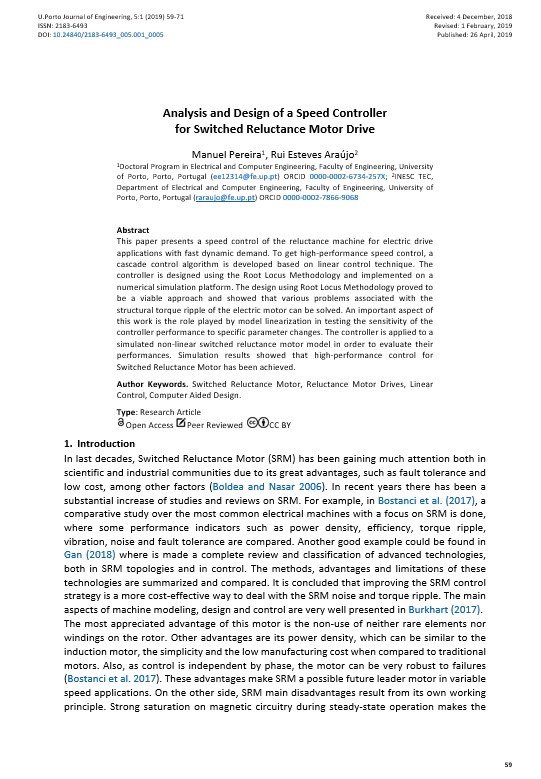Analysis and Design of a Speed Controller for Switched Reluctance Motor Drive
Main Article Content
Abstract
This paper presents a high precision speed control of the reluctance machine for electric drive applications. To get high resolution speed control, it is developed a cascade control algorithm based on linear control technique. The controller was designed using the Root Locus Methodology and has been implemented on a numerical simulation platform. It is shown that Root Locus Methodology design is a viable approach, and that various problems associated with the structural torque ripple of the electric motor can be solved. An important aspect of this work is the role played by model linearization in testing the sensitivity of the controller performance to specific parameter changes. The controller was implemented in a simulated non-linear switched reluctance motor model in order to evaluate their performances. Simulations results show that the high-performance control for Switched Reluctance Motor has been achieved.
Downloads
Article Details
Authors who publish with this journal agree to the following terms:
- Authors retain copyright and grant the journal right of first publication with the work simultaneously licensed under a Creative Commons Attribution License that allows others to share the work with an acknowledgement of the work's authorship and initial publication in this journal.
- Authors grant the journal the rights to provide the article in all forms and media so the article can be used on the latest technology even after publication and ensure its long-term preservation.
- Authors are able to enter into separate, additional contractual arrangements for the non-exclusive distribution of the journal's published version of the work (e.g., post it to an institutional repository or publish it in a book), with an acknowledgement of its initial publication in this journal.
- Authors are permitted and encouraged to post their work online (e.g., in institutional repositories or on their website) prior to and during the submission process, as it can lead to productive exchanges, as well as earlier and greater citation of published work (See The Effect of Open Access).

